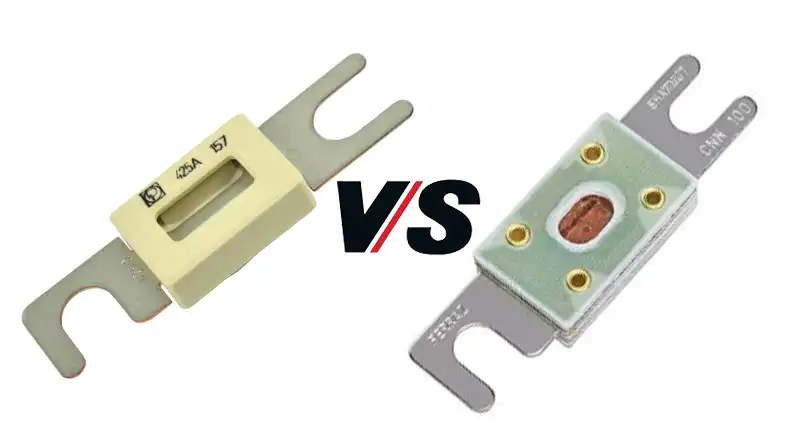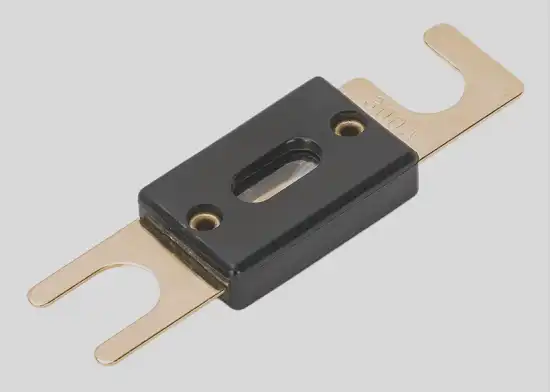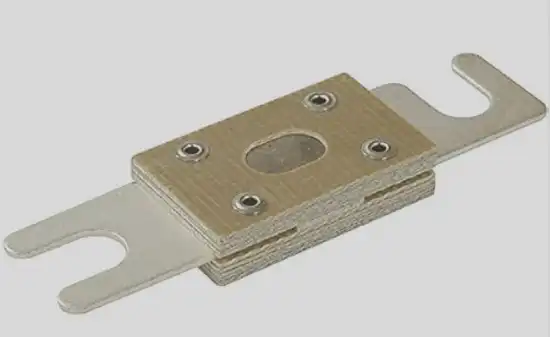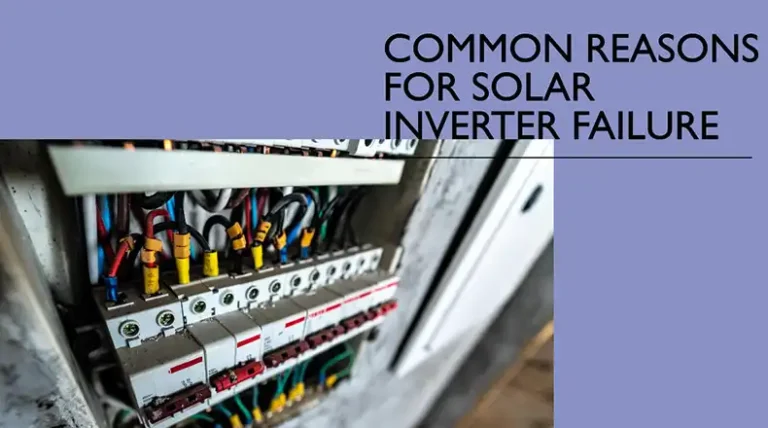ANL vs ANN Fuses: Key Differences and Solar Applications
As both an off-grid solar designer and RV enthusiast, I have an almost spiritual reverence for the humble fuse: that selfless guardian silently standing by ready to sacrifice itself rather than allow overloaded currents to endanger Downstream equipment.
Yet the subtle distinctions between their endless varieties remain shrouded to many end users. When it comes to the ubiquitous “ANL” and “ANN” DC fuses adorning most solar combiners and charging systems, confusion abounds despite their seeming similarities. How exactly do they differ? And why does it matter anyway if the darn things all ultimately blow up the same?!
Here, I’ve showcased everything that sets ANL and ANN DC fuses apart – from minute construction details allowing ANN to withstand truly explosive fault forces, to cost considerations that make common ANL variants attractive for basic systems. You’ll learn where each excels in solar applications and when interchangeability poses risks. So whether you’re optimizing a boat, homestead, or commercial solar farm, let’s banish confusion by shedding light on these crux safety devices once and for all!

ANL and ANN Fuses: A Brief Introduction
ANL and ANN designation refers to the particular dimensions and construction of wide, low-profile plug-in blade fuses commonly used in various DC applications from solar arrays to charging stations. Despite nearly identical appearances, ANL and ANN fuses provide different levels of circuit protection and suitability across various system configurations and risk profiles.


Current Rating
A fuse’s current rating signifies the maximum sustained load it can handle before “blowing” to disrupt excessive current flow. This helps match fuse capacity to wire gauges and device specifications.
Both ANL and ANN fuses share overlapping current rating ranges generally between 40 to 300 amps. However, ANL’s upper limit reaches a maximum of 400 amps, while ANN tops out at 300 amps in most cases.
Interrupt Rating
This specifies the maximum fault current force a fuse can safely disrupt without shattering or starting fires. ANL and ANN fuses possess divergent interrupt capabilities reflecting different intended usage scenarios.
ANN fuses boast interrupt ratings from 10,000A to a staggering 200,000+ amps making them exceptionally fault-tolerant. In contrast, ANL fuses range from only 500-3000 amps interrupting capacity. Clearly, ANN variants offer vastly greater protection against short circuit and overload extremes.
Cost Considerations
Given their robust internals and high interrupt ratings, ANN fuses unsurprisingly cost significantly more than ANL models of equivalent amperage. Expect to pay 2X-4X as much for an equivalent ANN fuse relative to the ANL alternative.
That said, ANN’s unmatched capacity to handle major fault events generally makes the added expense worthwhile for mission-critical systems requiring unmatched safety. For lower-risk or cost-sensitive installations, ANL models present an economical solution if sized properly.
Best Applications Based on Capabilities
Now that we’ve seen technical and pricing differentiators, let’s match each fuse variety to ideal use cases based on capabilities:
ANL Fuses
The lower cost and interrupting capacity make ANL models best suited for deployments like:
- Low-voltage DC appliances and small devices
- Basic off-grid solar RV/boating installations
- Small-scale renewable backup power banks
- 12V-48V household or sheds solar power with grid transfer switch
ANN Fuses
With superior interrupting capacity and therefore safety, ANN fuses fit applications including:
- Large commercial & industrial solar arrays
- Grid-tied solar combiner boxes
- Mission-critical off-grid inverters and charge controllers
- High-draw DC equipment like pumps, EV charging stations
So in summary: default to ANN for heavy-duty electrical infrastructure, while ANL models work for simpler mobile and backup systems.
Interchangeability Between ANL and ANN
At a glance, ANL and ANN fuses appear nearly identical with their wide low-profile “blade” design. However, their distinct dimensions, mounting bolts, and internal construction mean ANL and ANN variants cannot be used interchangeably in most cases.
Always verify fuse compatibility with hardware manuals or manufacturers before swapping types. Forcing an ANL fuse into an ANN holder (or vice versa) risks loose connections causing dangerous resistance heating and meltdowns. When in doubt, consult an electrician regarding matching your devices to suitable fuse types.
Differences Between ANL and ANN Fuses
Here is a comparison table to summarize the key differences between ANL and ANN fuses:
| Property | ANL Fuse | ANN Fuse |
| Current Rating | 40-400A | 40-300A |
| Maximum Interrupt Rating | 500-3,000A | 10,000-200,000A+ |
| Cost Per Amp | Lower | 2X-4X higher cost |
| Ideal Applications | RV, boats, small backup systems | Commercial & industrial solar, mission-critical systems |
| Interchangeable? | No – dimensions, mounting and connections differ | No – dimensions, mounting and connections differ |
| Example Compatible Hardware | Small MPPT controllers, low voltage appliances | String inverters, large charge controllers |
Basically,
– ANL fuses are more affordable but offer lower interrupt capacity suited for basic DC applications.
– ANN fuses handle extreme fault surges safely but cost significantly more. Ideal for large or critical systems.
Safety First When Working with DC Fuses!
When dealing with electrical systems, safety should always be the top priority:
a) De-energize and verify circuits are fully disconnected before fuse inspection or replacement
b) Double-check that fuse voltage/amp rating is aligned with devices and wiring
c) Only replace fuses with identical variants – never upgrade to higher capacities randomly
d) Label fuse amperage clearly on encapsulation
e) Consult qualified solar pros regarding proper system protection ratings
While often overlooked compared to more thrilling components, properly rated ANN and ANL fuses form a silently crucial shield keeping both equipment and people safe in solar power deployments for decades to come!
Wrapping It Up
I hope this guide has shed light on the pivotal role played by DC fuses in solar installations as well as the key differences between predominant ANL and ANN models. While their outward similarities can confuse, keep in mind their divergent capabilities and ideal implementation scenarios.
Whether building a small RV auxiliary system or a massive commercial array, never overlook the life-saving importance of properly rated and matched DC fuses! Size systems accordingly with the capacity to spare, choose fuse types wisely and check connections routinely to keep electrons flowing safely for years to come. Have any other questions? Don’t hesitate to knock me in the comment section!
Related FAQs
Can I use one large fuse rather than multiple smaller ones?
While possible, a single oversized fuse provides less tailored protection. Use individual appropriately sized fuses for each branch circuit to isolate faults and prevent unnecessary outages.
How often should I replace old fuses as maintenance?
Unlike AC breakers, DC fuses don’t require replacement on any fixed schedule if unaffected by faults. But do replace any blown fuse immediately with the identical variant. Periodically check for corrosion.
What size wire should I pair with a given DC fuse?
Size wiring at 125-150% of paired fuse current rating. So for a 100A fuse, use a minimum 125A wire gauge like 2 AWG. This prevents insulation from melting during sustained 100A loads.






